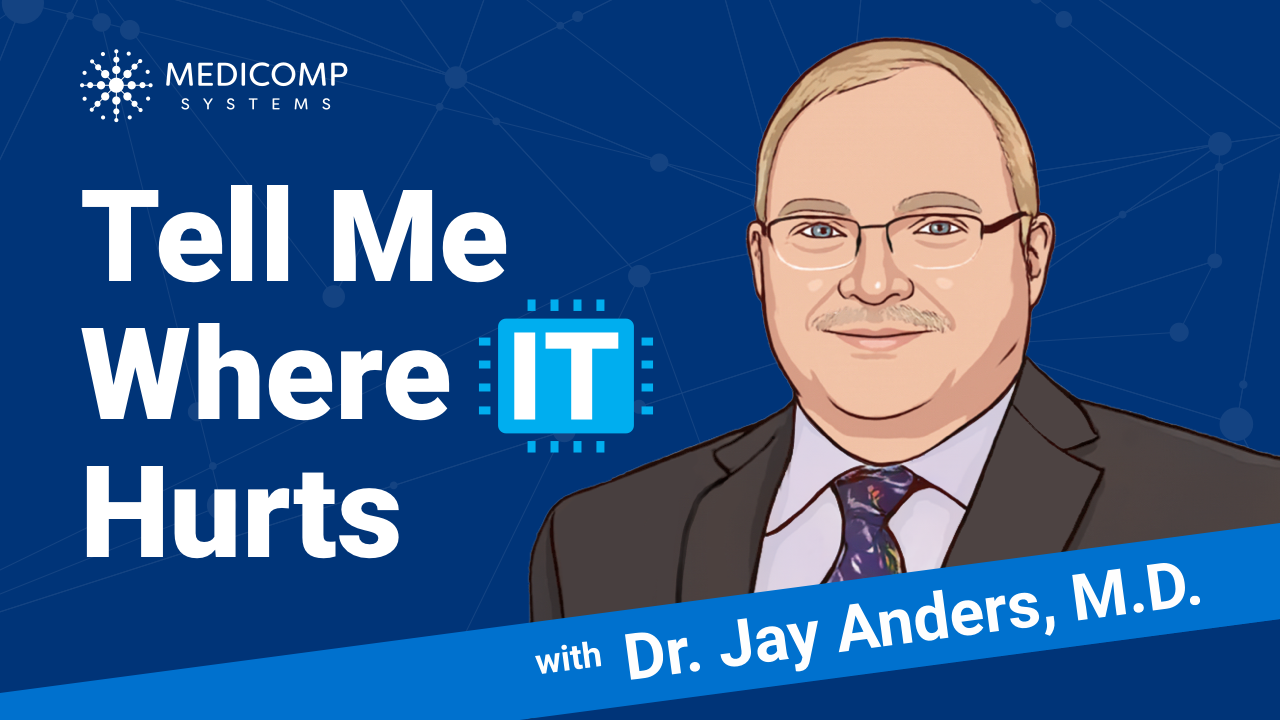A couple of years ago, Holy Name Medical Center in Teaneck, New Jersey made the astonishing decision to design and build a home-grown hospital information system. In this episode, Jessica Cox, R.N., B.S.N., the Medical Center’s Director of Product Solutions shares why and how her organization opted to develop its on EHR instead of purchasing a pre-baked solution.
Listen to the full podcast here or on your favorite podcast platform.
In this Tell Me Where IT Hurts episode, host Jay Anders, M.D. chats with Jessica Cox, who helped lead the development of a brand new EHR for Holy Name. Ms. Cox discusses why the hospital, which just went live on the EHR in its ED, chose not to adopt a commercially developed solution––and how a worldwide pandemic impacted development efforts.
Dr. Anders starts off sharing his experience from the late 1980s when he and a friend tried to develop an emergency room EHR. They initiated the project with an investment in hardware and people––and very, very quickly realized that creating and EHR from scratch isn’t easy and takes a lot of energy and technology.
Introducing Cox and the “absolutely coolest ER EMR”
Dr. Anders introduces Cox, who manages a broad portfolio of technology solutions for Holy Name, including the “absolutely coolest” EMR for an ED that he has ever seen. Cox, who started her career as a nurse at Children’s Hospital in Birmingham, entered the technology world about 12 years ago by helping clinicians get up to speed on EHRs.
Cox notes that the 360-bed Holy Name is one of the last remaining independent Catholic hospitals in the country and is committed to its vision of providing personal, compassionate care to a diverse population. For many years, Holy Name has embraced technology to enable this vision across every aspect of its operations.
When Holy Name decided to update its existing EHR (also internally developed), leaders soon realized that the “big box” solutions wouldn’t enable their vision for technology that enabled efficient workflows and supported personalized care. To ensure they had a person-centric solution, Holy Name decided to build the EHR themselves.
When Cox and her team initiated the project, they wanted a partner that could provide clinical content with decision support tools and relevant links to clinical findings. Holy Name selected Medicomp’s Quippe clinical data engine as a key component of its solution.
A different approach to development––and a COVID interruption
From the start, Cox and her team decided that technology would not be the driving force for the initiative. Instead, the development team relied heavily on the input of their Holy Name clinician colleagues and sought to understand their preferred processes and workflows.
And, just as development was taking off, COVID-19 hit, and Holy Name quickly became one of the nation’s first COVID hot spots. As their co-workers struggled with surging patient loads, Cox’s team remained committed to moving forward with development, despite no longer having the luxury of shadowing clinicians to better understand workflows.
MVP goes live and development continues
Cox reports that when Holy Name launched its MVP (minimally viable product) in the ED in May, things went “exceptionally well.” Her team is still actively engaged with end users, who report the system is user friendly and is managing patients effectively and seamlessly. Holy Name continues to refine the EHR and intends to eventually launch the solution across the enterprise, including in ambulatory clinics and in the acute care setting.
Cox and other members of her team look forward to showing their solution to other organizations and will provide product demonstrations at the upcoming HIMSS conference in Medicomp’s booth #3421.
Waving a magic wand
As has become his custom, Dr. Anders finishes the interview asking Cox what she would change in health IT if she could wave a magic wand.
To hear her thoughts – which include developing health IT solutions that enable users to take good care of patients – listen here.
